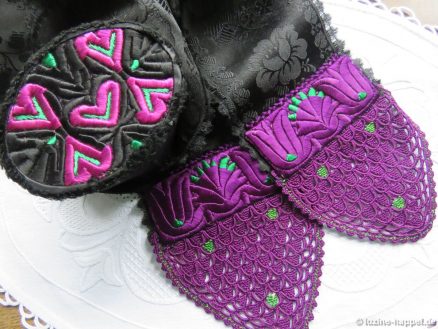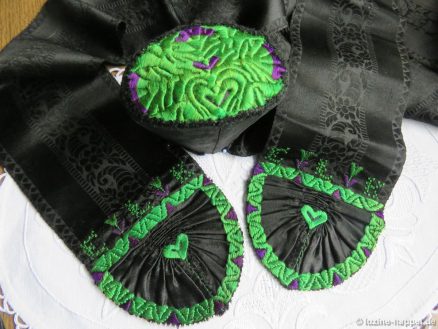Schwalm women wore little caps to match their festive costume. The little caps were placed over the hair knots.
The little caps had different sizes depending on the wearer: child, adult, or woman with an especially magnificent head of hair.
The little caps were primarily flat and wide; later they became more and more tall with the sides tapered down to a smaller opening.
The little caps had walls and lids – the so-called cap bottoms. The walls were covered with silk or moiré. They were black. Only unmarried girls wore caps with red walls. (One source propounds that these red caps are the origin of the fairy tale Little Red Riding Hood)
The bottoms of the caps were elaborately and usually colourfully embroidered. The colours always matched the colour of the costume – red, green or blue (purple).
Many artistic designs came from the template maker. Perfectly crafted templates were primarily covered with colourful embroidery using fine woolen yarn; silk threads were used later.
Much later, gold and silver bullion and sequins were added.
The older, somewhat wider caps were usually additionally decorated at the edges with narrow single templates, which were also finely embroidered.
Drawing on these rich design arrangements as inspiration, I asked the designer Christa Waldmann to draw outlines for whitework. Look forward to seeing the beautiful results next week.
Each cap had matching (in colour) cap bands, the Kappenschnüre.
The ends of these cap bands were made very differently – this is a subject of a future article.













Leave a Reply